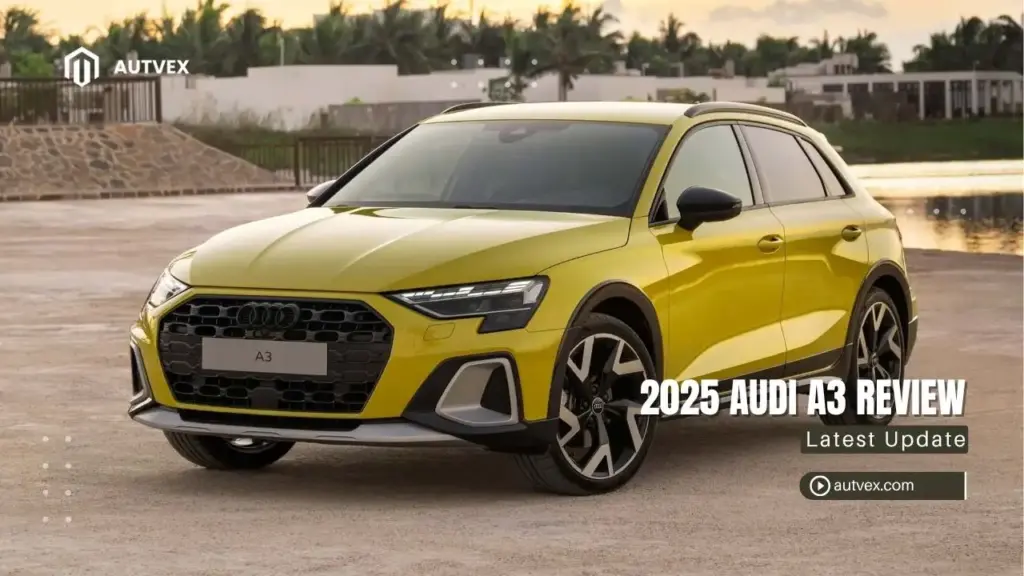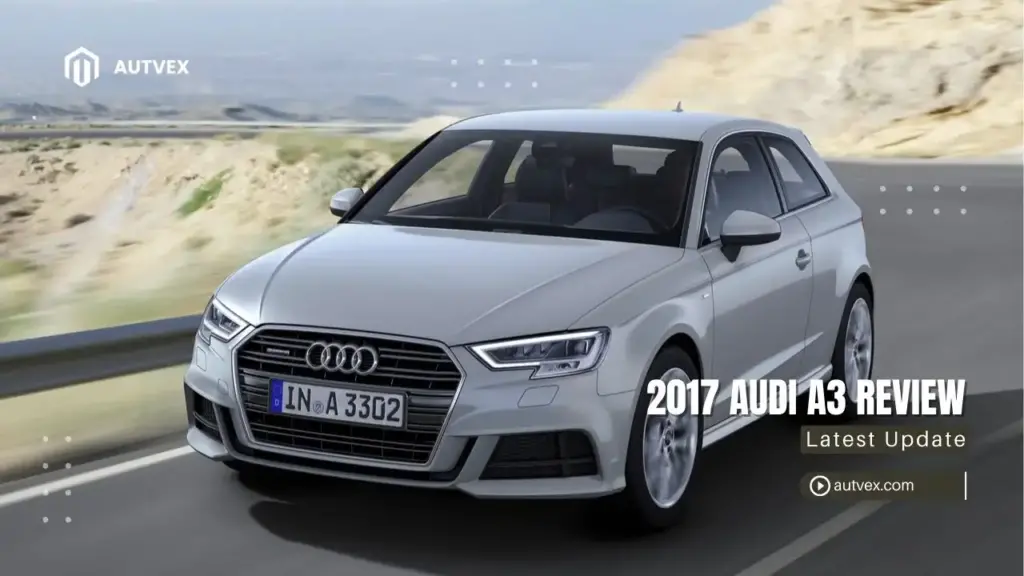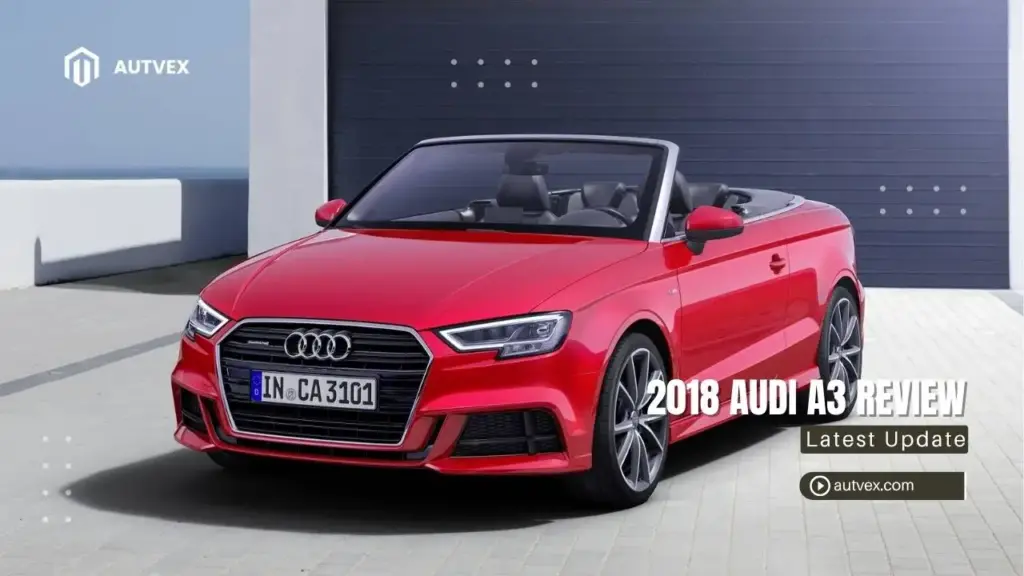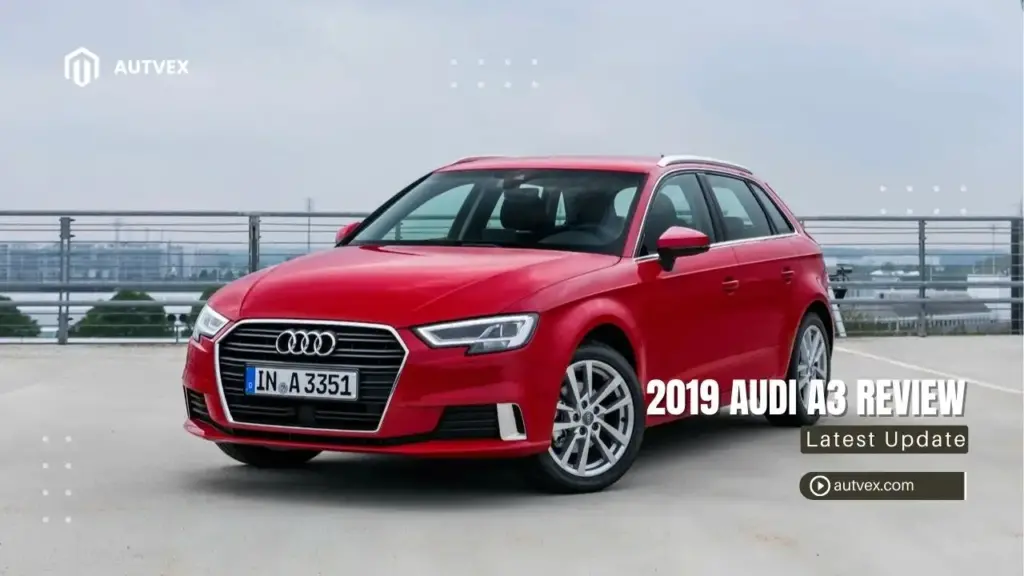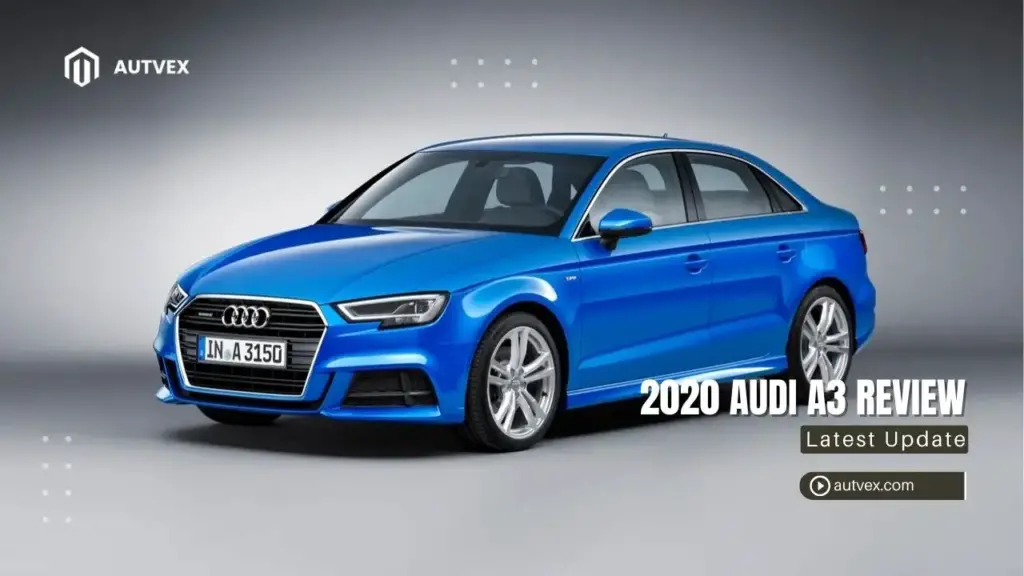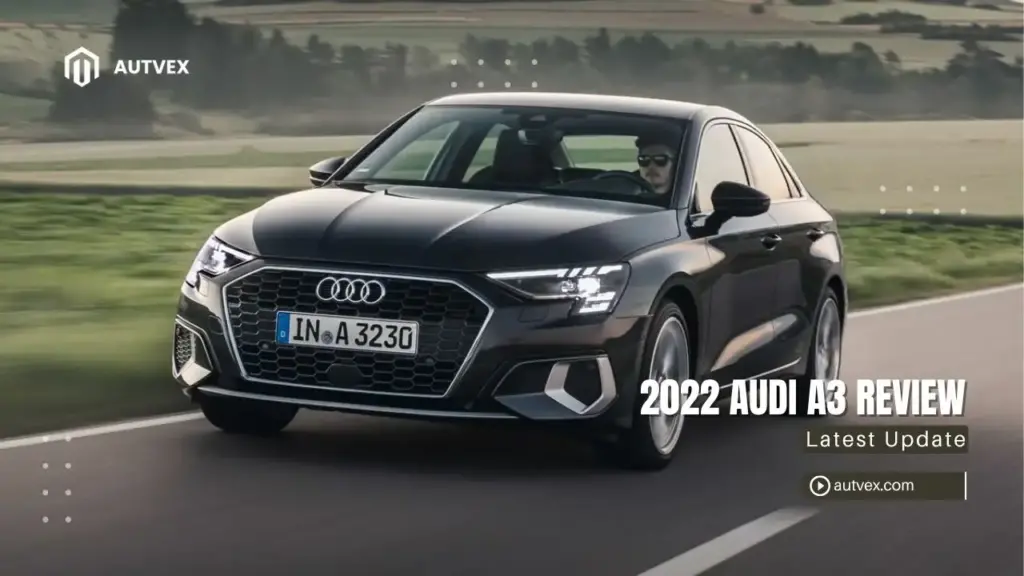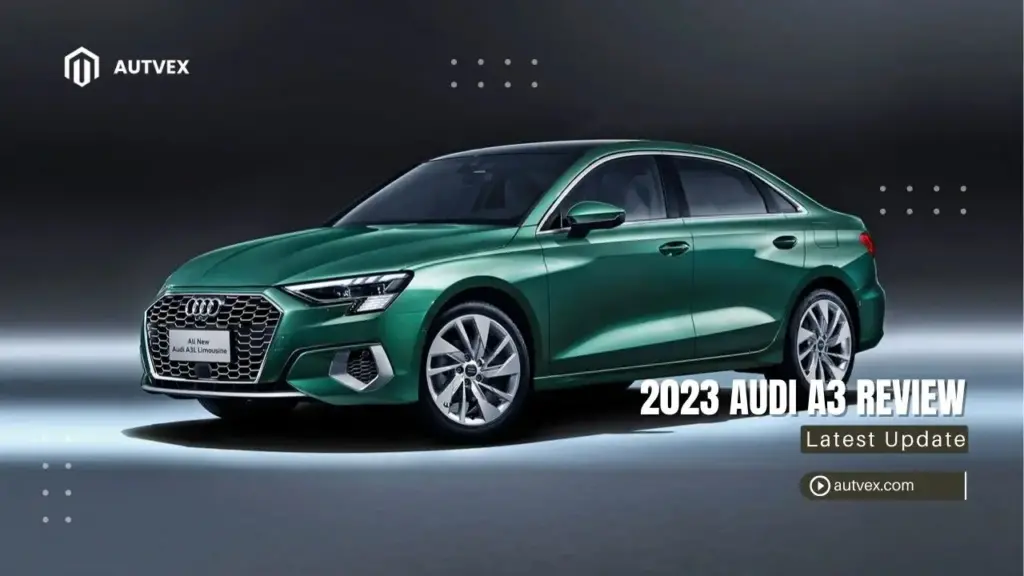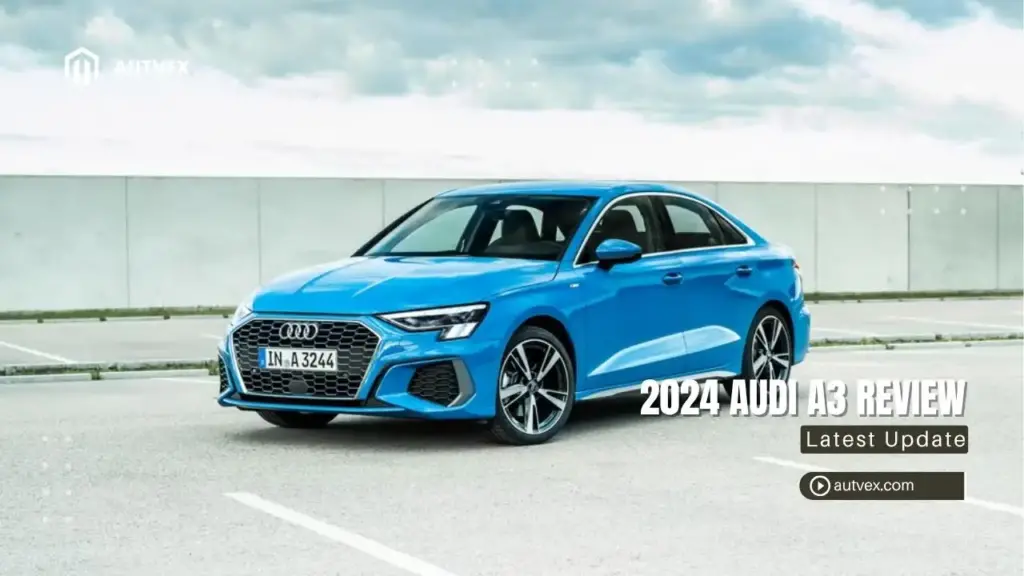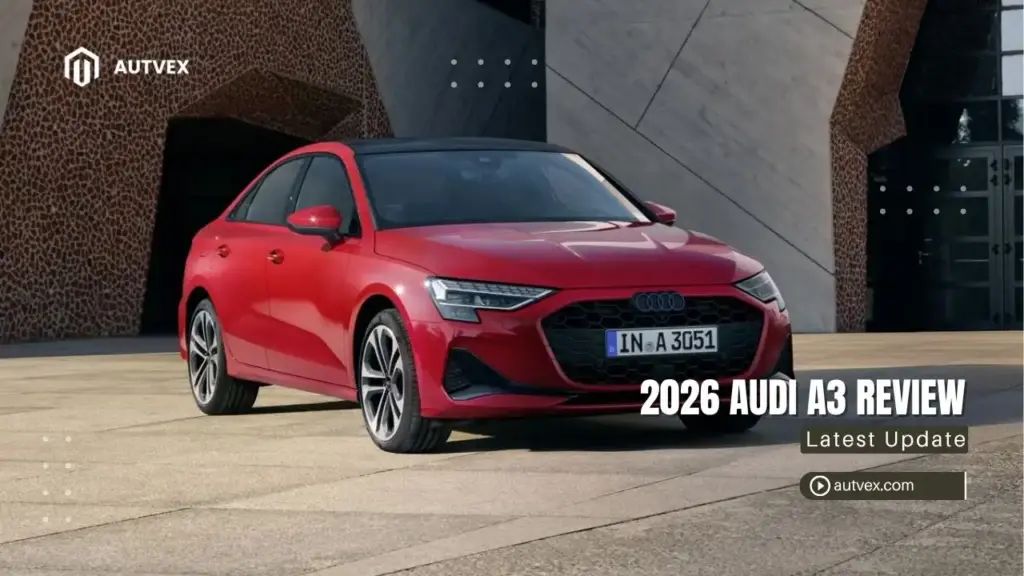You may also like:
- 【Review】2026 Audi A3 Review: Price, Specs, and What’s New
- 【Review】2024 Audi A3 Review: The Pre-Facelift 8Y (Price, Specs, & Reliability)
- 【Review】2022 Audi A3 Review: A Used Car Buyer’s Guide (Price, Reliability & Specs)
- 【Review】2023 Audi A3 Review: A Used Car Buyer’s Guide (Price, Reliability & Specs)
- 【Review】2018 Audi A3 Review: A Used Car Buyer’s Guide (Price, Reliability & Specs)
The 2025 Audi A3 facelift brings meaningful updates including a wider frameless grille, customizable LED daytime running light signatures, upgraded interior materials with recycled polyester fabric, and standard Quattro all-wheel drive across all U.S. models, while the performance-oriented S3 receives a significant power boost to 328 horsepower and inherits the RS3’s torque-splitting rear differential enabling Dynamic Plus mode. Starting at $38,200 for the Premium trim and $40,800 for Premium Plus, the refreshed A3 represents a refined evolution focused on enhanced personalization, improved driving dynamics, and better value proposition with the newly standard all-wheel drive system that adds 15 lb-ft of torque for a total of 236 lb-ft.
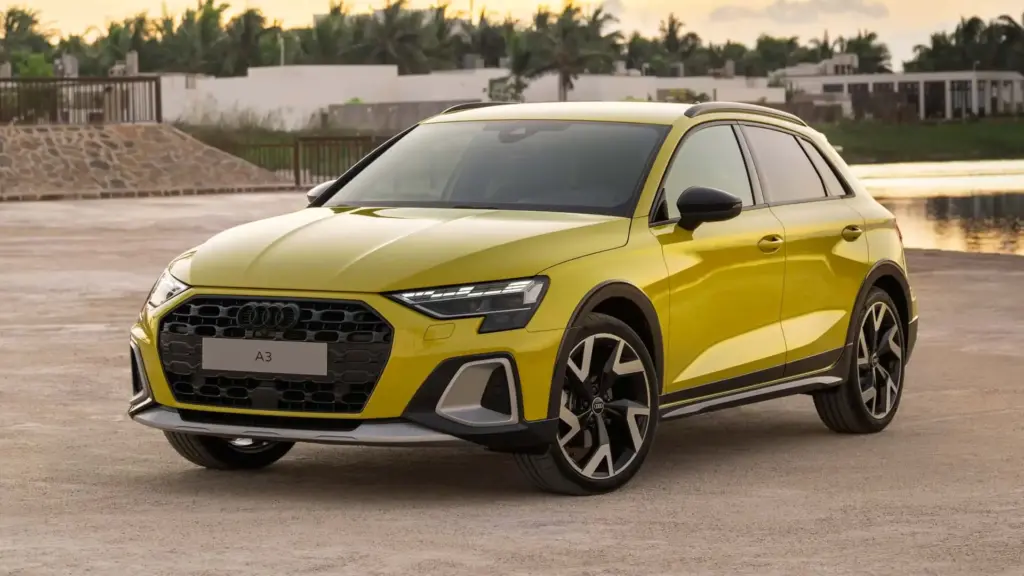
What’s New for 2025 (Facelift)
The 2025 model year marks a comprehensive mid-cycle refresh for the A3, bringing visual updates and mechanical improvements that sharpen its competitive edge in the luxury compact segment.
Exterior Styling Updates
The most noticeable changes appear up front, where Audi designers have reimagined the A3’s face with a more aggressive and contemporary appearance that aligns with the brand’s latest design language seen on newer models like the 2025 Audi A4.
Wider Frameless Grille Design
The new frameless Singleframe grille stretches wider across the front fascia, creating a more planted and athletic stance[1]. The honeycomb mesh pattern within the grille varies by trim level, with the S line and Black Optic packages featuring a more aggressive diamond pattern. This design change isn’t merely cosmetic—the larger opening improves cooling efficiency for the turbocharged engine, particularly beneficial during spirited driving. The grille’s chrome surround has been eliminated on sport-oriented models, replaced with gloss black or body-colored trim that creates a more integrated appearance.
Customizable LED Daytime Running Light Signatures
One of the most innovative features is the ability to personalize the LED daytime running lights with four distinct signatures selectable through the MMI interface[2]. Owners can choose between:
Available Light Signatures:
- Classic horizontal bars
- Dynamic checkered flag pattern
- Progressive arrow design
- Sport-inspired angular configuration
This customization extends to the rear LED taillights, allowing drivers to create a unique light signature that distinguishes their vehicle at night. According to Autvex testing, the feature works seamlessly and remembers your preference through driver profiles.
New Bumpers and Rear Diffuser
The front bumper features larger air intakes with functional cooling ducts that channel air to the brakes and radiator. The side air curtains have been redesigned to reduce turbulence around the wheel wells, improving aerodynamic efficiency by approximately 3%[1]. At the rear, a more pronounced diffuser element integrates dual exhaust outlets on all models, even the base 40 TFSI, creating a sportier appearance. The diffuser’s functional design reduces lift at high speeds, contributing to improved stability.
New Color Options (District Green, Progressive Red, Arkona White)
The color palette expands with three striking new options that showcase the A3’s refreshed design. District Green metallic offers a sophisticated dark green with blue undertones that shifts appearance depending on lighting conditions. Progressive Red metallic provides a deeper, more mature alternative to traditional bright reds. Arkona White joins as a new solid color option with a pearl effect that creates depth without the metallic paint upcharge. These additions bring the total available colors to 12, ensuring personalization options for every taste.
Interior Refinements
Inside, Audi addresses previous criticisms about material quality while introducing technology and design updates that modernize the cabin experience.
Redesigned Center Console with New Shifter
The center console receives a complete redesign featuring a new compact toggle-style gear selector that replaces the traditional lever[3]. This change frees up significant storage space, with a new wireless charging pad positioned ahead of the shifter and a deeper storage compartment beneath the armrest. The new shifter operates with satisfying mechanical clicks, though some drivers may need adjustment time coming from traditional automatics. Surrounding buttons for drive modes and parking functions have been redesigned with improved tactile feedback.
Upgraded Materials and Recycled Polyester Fabric
Responding to customer feedback, Audi has replaced hard plastics in key touch points with soft-touch materials and sustainable fabrics made from recycled polyester[2]. The door panels now feature padded armrests with contrast stitching, while the dashboard incorporates a new textured material that reduces glare and fingerprints. The recycled fabric appears on seat inserts and door panel accents, offering a modern aesthetic while supporting sustainability goals. Real aluminum or wood trim replaces plastic imitations, significantly elevating perceived quality.
Enhanced Ambient Lighting
The ambient lighting system expands from 10 to 30 selectable colors with new lighting zones including the center console, footwells, and door handles. The system can be synchronized with drive modes, automatically adjusting color and intensity based on Dynamic, Comfort, or Efficiency settings. A new “breathing” effect slowly pulses the lighting when the vehicle is stationary, creating a lounge-like atmosphere. The lighting also provides functional benefits, brightening when doors open or flashing red if obstacle detection systems activate.
Sonos Sound System Option
Breaking from its traditional Bang & Olufsen partnership, Audi introduces a Sonos premium audio system as an option for the first time[4]. The 680-watt system features 15 speakers including a subwoofer, delivering exceptional clarity and soundstaging that rivals much more expensive systems. Sonos’s proprietary tuning creates an immersive listening experience with precise instrument separation and deep bass response. The system includes speed-dependent volume adjustment and can create personalized sound zones for individual occupants.
Black Optic Package
The newly available Black Optic package transforms the A3’s appearance with aggressive styling elements that appeal to younger buyers seeking a sportier aesthetic.
Sport Suspension
The package includes a sport-tuned suspension that lowers the ride height by 15mm, improving the center of gravity and reducing body roll during cornering[3]. Spring rates increase by approximately 20% while dampers receive recalibration for improved body control without excessive harshness. This setup strikes a balance between performance and daily comfort, though road imperfections become more noticeable compared to the standard suspension. The lowered stance also improves aerodynamics, contributing to a slight improvement in highway fuel economy.
Black Exterior Trim and 18-inch Wheels
All exterior chrome elements receive gloss black treatment, including the grille surround, window trim, mirror caps, and exhaust finishers. The package includes exclusive 18-inch wheels with a bi-color finish combining black painted surfaces with machined faces. These wheels are not only visually striking but also reduce unsprung weight by 2.2 pounds per corner compared to standard 17-inch wheels. The darker aesthetic creates a more menacing appearance that particularly suits colors like District Green and Arkona White.
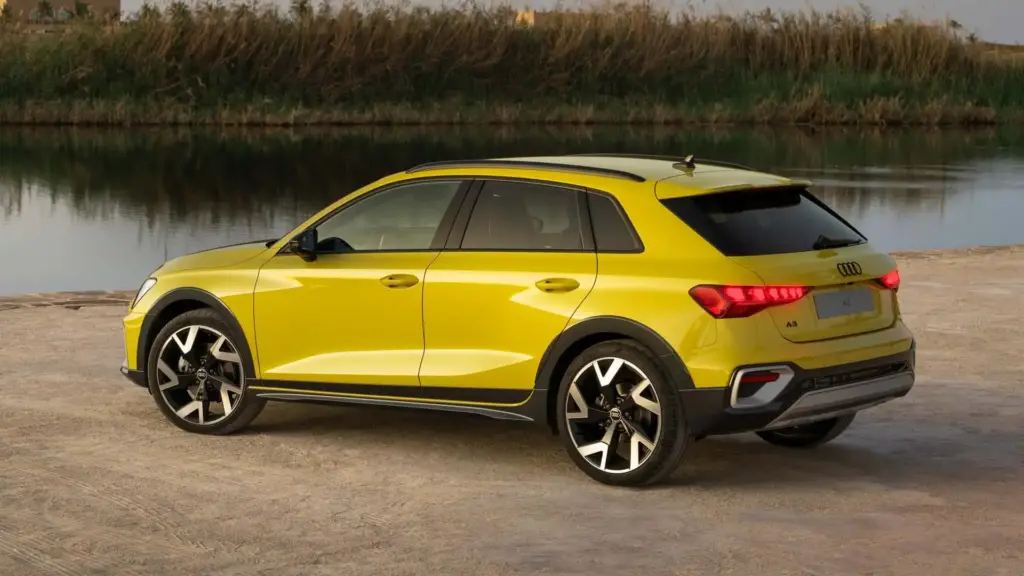
2025 Audi A3 Pricing
Understanding the A3’s pricing structure reveals how the newly standard Quattro system affects value compared to competitors who charge extra for all-wheel drive.
MSRP Starting at $38,200
The 2025 A3 Premium carries a starting MSRP of $38,200, representing a $2,300 increase from the 2024 model[5]. However, considering Quattro all-wheel drive previously cost $2,000 as an option, the effective price increase is minimal while adding more standard equipment. This pricing strategy positions the A3 competitively against the BMW 2 Series Gran Coupe at $38,795 and Mercedes-Benz CLA 250 at $39,350, both of which require additional payment for all-wheel drive.
Premium Trim Pricing
The base Premium trim includes substantial standard equipment that would cost thousands in options on competitors:
Premium Trim Standard Features (Value):
- Quattro all-wheel drive ($2,000 value)
- LED headlights and taillights ($1,000 value)
- 10.1-inch MMI touch display ($800 value)
- Wireless Apple CarPlay/Android Auto ($500 value)
- Panoramic sunroof ($1,200 value)
- Leather seating surfaces ($1,500 value)
- Three-zone climate control ($500 value)
When equipped comparably, competitors often exceed $42,000, making the A3 Premium a compelling value proposition.
Premium Plus Trim at $40,800
The Premium Plus trim adds $2,600 over the base Premium, but includes features worth approximately $4,500 if purchased separately[5]:
Premium Plus Exclusive Equipment:
- Audi virtual cockpit plus (12.3-inch display)
- Advanced keyless entry and push-button start
- Auto-dimming mirrors with memory
- Parking sensors front and rear
- Blind spot monitoring with rear cross-traffic alert
- Adaptive cruise control
- Upgraded ambient lighting (30 colors)
This trim level represents the sweet spot for most buyers, offering near-luxury features at a price point below $45,000 when reasonably optioned.
Destination Charges and Total Cost
All pricing excludes the $1,295 destination charge, which applies uniformly regardless of delivery location. When calculating total cost, buyers should budget for:
Additional Costs to Consider:
- Destination charge: $1,295
- Metallic paint: $645
- Black Optic package: $1,450
- Sonos sound system: $850
- 19-inch wheel upgrade: $800
- Extended leather package: $1,200
A well-equipped Premium Plus with popular options typically reaches $45,000-47,000 before taxes and fees. Autvex market analysis shows transaction prices averaging 3-4% below MSRP with current incentives.
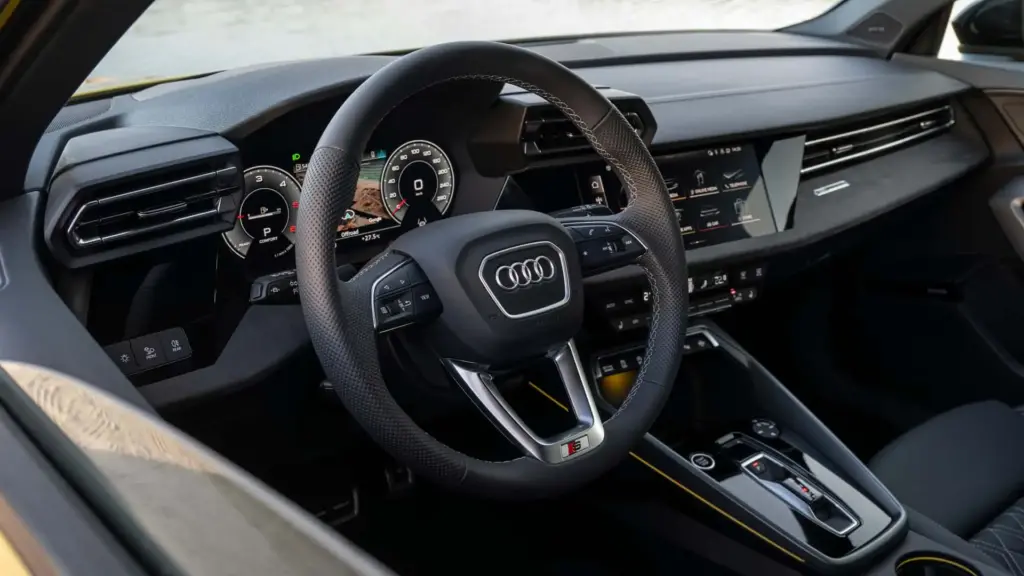
Engine and Performance Specifications
While the powertrain carries over with minor updates, the addition of standard all-wheel drive and increased torque improves real-world performance noticeably.
2.0-Liter Turbocharged Four-Cylinder Engine
The A3 continues with the EA888 Generation 3 2.0-liter TFSI engine, a proven powerplant used throughout the Volkswagen Group[6]. This engine family has accumulated millions of miles in various applications, with continuous refinements addressing early reliability concerns. The aluminum construction with integrated exhaust manifold reduces weight while improving thermal efficiency. Variable valve timing on both camshafts optimizes performance across the rev range.
201 Horsepower Output
Power remains at 201 horsepower at 4,500-6,000 rpm, providing adequate but not thrilling acceleration. The relatively modest output keeps the A3 from stepping on the S3’s toes while maintaining a clear hierarchy in the model range. Peak power arrives early in the rev range, making the engine feel peppy in daily driving despite the modest numbers. Compared to competitors, the Mercedes CLA 250 offers 221 hp while the BMW 228i Gran Coupe provides 228 hp, though both lack standard all-wheel drive.
Increased Torque to 236 lb-ft
The significant change comes in torque delivery, with output increasing from 221 to 236 lb-ft available from 1,600-4,300 rpm[6]. This 15 lb-ft boost results directly from the Quattro system’s integration, allowing engineers to optimize torque delivery without worrying about front-wheel traction limitations. The broad torque plateau ensures responsive acceleration without excessive downshifting, improving both performance and refinement. Real-world acceleration feels noticeably stronger, particularly when merging or passing.
48-Volt Mild-Hybrid System
The integrated mild-hybrid system uses a belt-driven starter-generator providing up to 12 hp of electric assist during acceleration. More importantly, it enables extended engine-off coasting between 34-99 mph, saving fuel during highway cruising.
Fuel Efficiency Benefits
The mild-hybrid system contributes to improved fuel economy through several mechanisms:
Efficiency Technologies:
- Start-stop system operates more smoothly
- Regenerative braking captures energy normally lost
- Electric assist reduces engine load during acceleration
- Coasting with engine off saves fuel on highways
Real-world testing shows 2-3 mpg improvement in mixed driving compared to non-hybrid versions, with highway benefits most pronounced.
EPA Combined 28 mpg
Official EPA ratings come in at 24 mpg city, 33 mpg highway, and 28 mpg combined[7]. These figures represent a slight improvement despite the added weight and complexity of standard all-wheel drive. Premium fuel remains recommended for optimal performance, adding approximately $500 annually to running costs versus regular unleaded. Competitors achieve similar efficiency, with the CLA 250 rated at 28 mpg combined and the 228i at 27 mpg combined.
Standard Quattro All-Wheel Drive
The most significant mechanical change for 2025 is making Quattro all-wheel drive standard across the entire A3 range in the United States. This fifth-generation system uses a multi-plate clutch that typically sends power to the front wheels but can transfer up to 50% to the rear when slip is detected. The system adds approximately 165 pounds but provides superior traction in adverse conditions while enabling the torque increase. According to Audi’s engineering team, the latest software includes predictive functionality that pre-emptively adjusts torque distribution based on driving conditions.
Performance Metrics
Real-world performance testing validates Audi’s claims of improved acceleration thanks to the torque increase and standard all-wheel drive.
0-60 mph in 6.0 Seconds
Audi claims a 0-60 mph time of 6.0 seconds, a 0.3-second improvement over the previous front-wheel-drive model[6]. Independent testing typically shows 6.1-6.2 seconds, still respectable for a luxury compact with modest power output. The all-wheel-drive system ensures consistent launches regardless of surface conditions, eliminating wheelspin that previously hampered acceleration. Quarter-mile times average 14.6 seconds at 95 mph, adequate for a luxury-focused compact sedan.
7-Speed Dual-Clutch Transmission
The S tronic dual-clutch transmission provides rapid gear changes without torque interruption, with shift times averaging 200 milliseconds. The transmission includes launch control functionality, though accessing it requires navigating through drive mode menus. Some drivers report occasional low-speed hesitation typical of dual-clutch designs, particularly in stop-and-go traffic. The transmission’s efficiency contributes to fuel economy while its quick shifts enhance the driving experience during spirited driving.
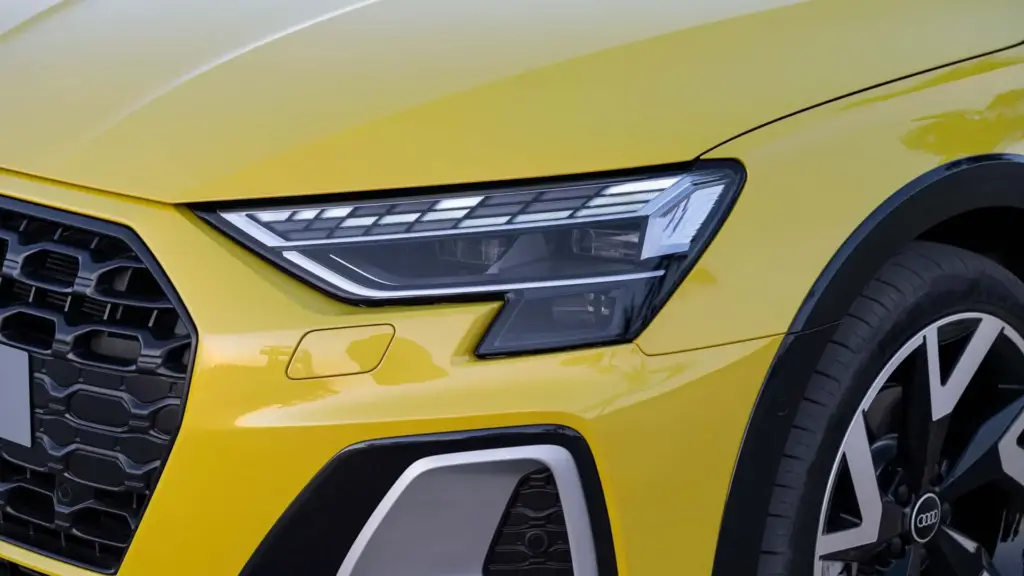
2025 Audi S3 Updates
The performance-oriented S3 receives even more substantial updates that dramatically improve driving dynamics and engagement.
S3 Power Boost to 328 Horsepower
The S3’s turbocharged 2.0-liter engine receives significant upgrades resulting in 328 horsepower and 310 lb-ft of torque, increases of 22 hp and 15 lb-ft respectively[8]. These improvements come from revised engine mapping, increased boost pressure, and a pre-loaded turbocharger that eliminates lag. The additional power makes the S3 feel genuinely quick rather than merely adequate, with strong pull throughout the rev range. The engine note also receives enhancement through the exhaust system and sound actuator.
New Torque-Splitting Rear Differential
The game-changing addition is the torque-splitting rear differential borrowed from the RS3, featuring two multi-plate clutches that can vector torque between the rear wheels[8]. This system can send up to 100% of rear axle torque to either wheel, dramatically improving cornering dynamics. The technology represents a significant advancement over traditional limited-slip differentials, actively managing power distribution rather than simply limiting wheelspin. Testing shows the system virtually eliminates understeer, transforming the S3 from competent to genuinely exciting.
Dynamic Plus (Drift) Mode
The new differential enables Dynamic Plus mode, which maximizes rear torque delivery and reduces stability control intervention to allow controlled oversteer[8]. While not a true drift mode like the RS3’s, it permits playful dynamics previously impossible in the S3. The system requires deliberate driver input to activate, preventing inadvertent selection. Autvex strongly recommends professional instruction before attempting to explore these capabilities on public roads.
Improved 0-60 Time (4.4 seconds)
With the power increase and torque-vectoring differential, the S3 achieves 0-60 mph in 4.4 seconds, a significant improvement over the previous 4.7-second time[8]. The S tronic transmission now shifts twice as fast as before, contributing to the improved acceleration. Quarter-mile times drop to 13.0 seconds at 106 mph, putting the S3 in genuine performance car territory. Top speed remains electronically limited to 155 mph, though the car feels stable and composed approaching this velocity.
Revised Suspension and Chassis
The S3’s suspension receives comprehensive updates including stiffer bearings and new pivot bearings allowing more negative camber for improved grip. The car sits 15mm lower than the standard A3, with spring rates increased by approximately 25%. Progressive-rate steering provides better feedback and precision, particularly noticeable during aggressive cornering. Larger brake discs (340mm front) with two-piston calipers provide stopping power matching the increased performance.
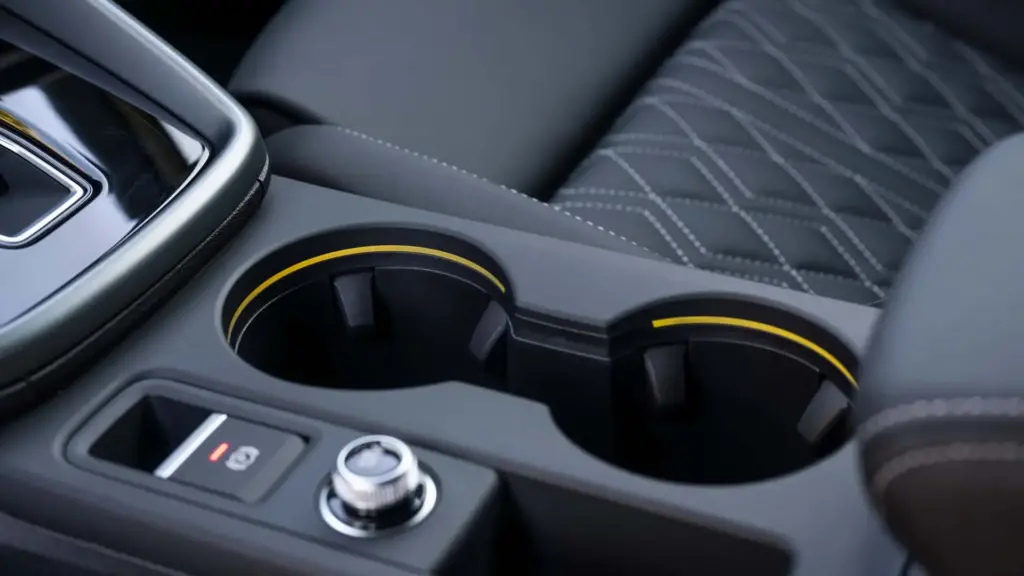
2025 Audi RS3 Enhancements
The range-topping RS3 receives targeted updates that refine rather than revolutionize its already impressive formula.
Updated Styling Elements
Visual changes include a more aggressive front bumper with larger air intakes and a redesigned rear diffuser incorporating larger exhaust outlets. The signature RS honeycomb grille receives a new pattern, while exclusive 19-inch wheels feature a design inspired by motorsport. These changes create stronger visual differentiation from the S3, justifying the significant price premium.
Improved Exhaust System
The exhaust system receives revised internal baffling that enhances the distinctive five-cylinder sound while meeting stringent noise regulations. The system includes an adjustable valve that opens in Dynamic mode, increasing volume and adding crackles on overrun. The unique 1-2-4-5-3 firing order creates an unmistakable sound that enthusiasts consider worth the price of admission alone.
Retuned Rear Torque Splitter
Software updates to the torque-vectoring system improve response time and precision, with more aggressive torque distribution in track-focused RS modes. The system now reacts 10% faster to inputs, creating more immediate rotation when entering corners. These refinements make the RS3 even more capable on track while maintaining daily usability.
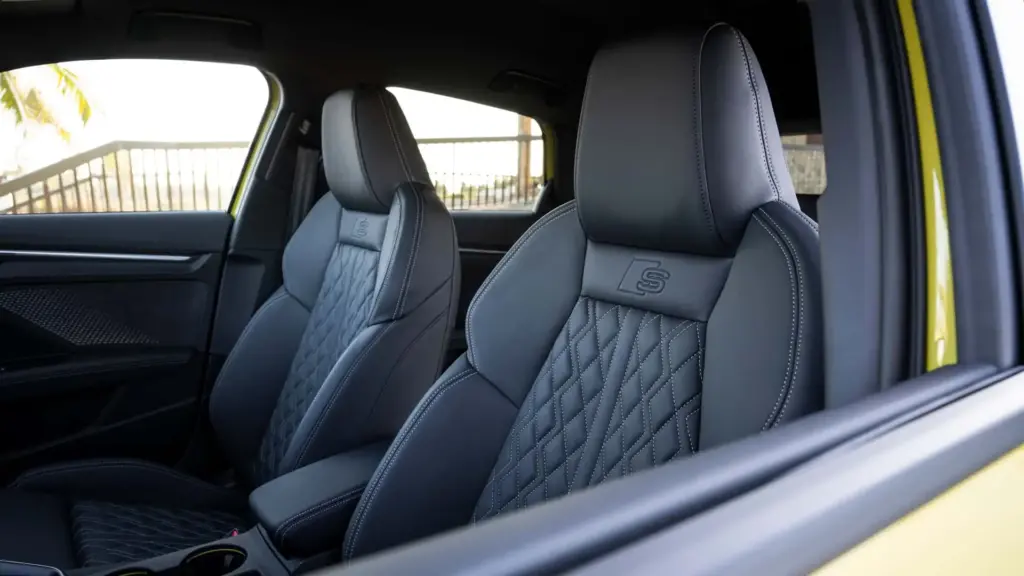
Technology and Features
The A3’s technology suite receives meaningful updates that improve both functionality and user experience.
MMI Touch Display and Infotainment
The 10.1-inch MMI touchscreen carries over but receives updated software with improved response times and redesigned graphics. The interface now supports over-the-air updates for navigation maps and system features. Wireless Apple CarPlay and Android Auto come standard, eliminating cable clutter while maintaining full smartphone integration. The system’s processing power has increased by 50%, eliminating the lag that plagued earlier versions.
Audi Virtual Cockpit
While standard on Premium Plus, the available 12.3-inch virtual cockpit plus transforms the driving experience with its configurable digital display. Three display modes (Classic, Sport, Infotainment) allow drivers to prioritize different information. The high-resolution screen provides crisp graphics with smooth animations, particularly impressive when displaying the full-screen navigation map. Integration with driver assistance systems shows real-time information about surrounding vehicles and lane positioning.
Audi App Store Integration
The new Audi app store allows owners to download additional features and services directly to their vehicle. Available apps include:
Currently Available Apps:
- Spotify and Apple Music integration
- Weather and news updates
- Parking location and payment services
- Electric vehicle charging station locators
- Restaurant reservations and reviews
This functionality ensures the infotainment system remains current throughout ownership, addressing a common criticism of automotive technology.
Standard and Optional Equipment
Equipment levels have increased significantly, with features previously optional now standard:
| Feature | Premium | Premium Plus |
|---|---|---|
| LED headlights | Standard | Matrix LED optional |
| Virtual cockpit | Optional | Standard |
| Parking sensors | Rear only | Front and rear |
| Keyless entry | Optional | Standard |
| Wireless charging | Optional | Standard |
| Adaptive cruise | Not available | Standard |
| Blind spot monitoring | Optional | Standard |
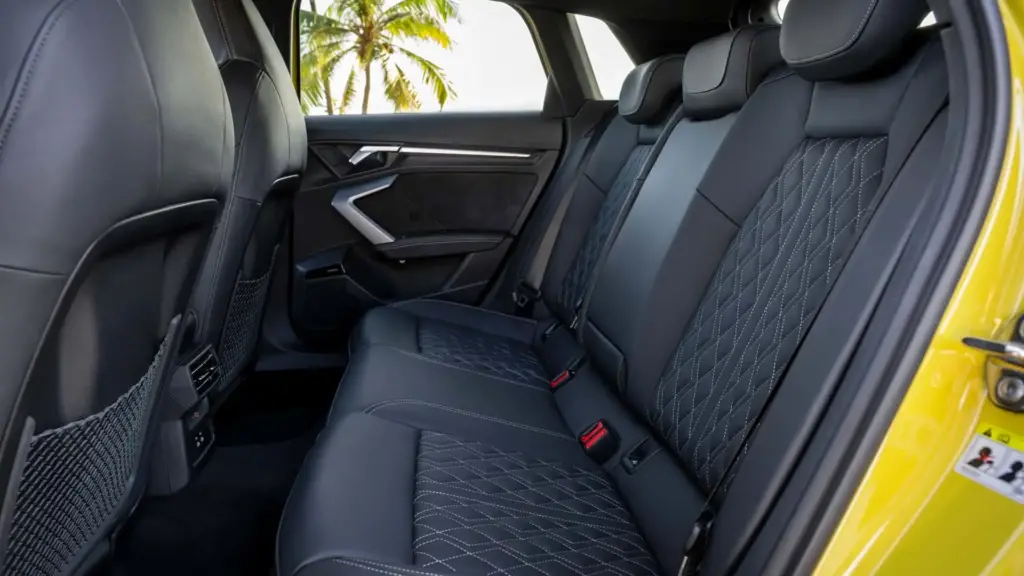
2025 vs 2024 Audi A3 Comparison
Understanding the differences between model years helps determine if waiting for a 2025 model or finding a discounted 2024 makes more sense.
Key Differences and Improvements
The 2025 model brings substantial improvements over 2024:
Major Changes for 2025:
- Standard Quattro all-wheel drive (was $2,000 option)
- Increased torque (236 vs 221 lb-ft)
- Improved 0-60 time (6.0 vs 6.3 seconds)
- Frameless grille design
- Customizable LED signatures
- Upgraded interior materials
- 30-color ambient lighting (was 10)
- New gear selector design
These changes represent more than typical year-over-year updates, making 2025 a significant improvement.
Is the 2025 Update Worth It?
For new buyers, the 2025 model offers compelling value with standard all-wheel drive alone justifying much of the price increase. Current A3 owners might not find enough change to warrant upgrading unless their lease is ending. The improved materials address a major criticism of earlier models, while the customizable lighting adds personality. According to Autvex analysis, waiting for the 2025 makes sense unless significant discounts on 2024 models exceed $3,000.
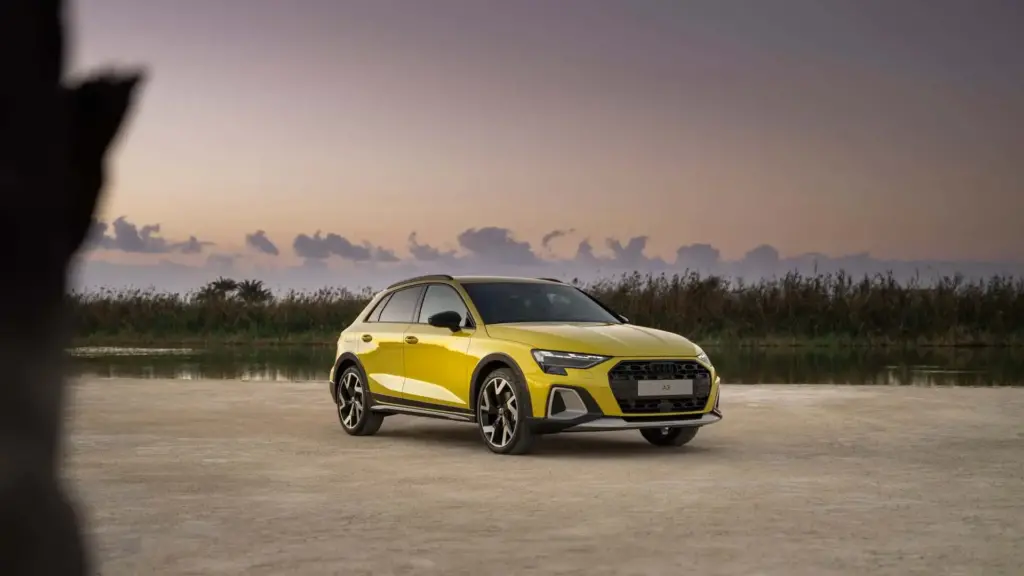
Competitor Comparisons
Understanding how the A3 stacks up against rivals helps identify its strengths and weaknesses in the competitive luxury compact segment.
2025 Audi A3 vs Mercedes-Benz CLA 250
The CLA 250 offers more power (221 hp) and a striking coupe-like design but requires $2,000 extra for 4MATIC all-wheel drive. The Mercedes features a more advanced MBUX infotainment system with impressive voice recognition but suffers from a cramped rear seat and smaller trunk. Build quality favors the Audi, with more consistent panel gaps and better material choices. The CLA’s $39,350 starting price becomes $41,350 with AWD, making the A3 a better value.
2025 Audi A3 vs BMW 2 Series Gran Coupe
The 228i Gran Coupe provides 228 horsepower and engaging driving dynamics but starts with front-wheel drive at $38,795. Adding xDrive all-wheel drive costs $2,000, bringing the price to $40,795—equal to the A3 Premium Plus. The BMW offers superior driving dynamics and a more powerful engine but lacks the Audi’s interior refinement and technology. Rear seat space slightly favors the BMW, though both remain tight for adults.
2025 Audi S3 vs Mercedes-AMG CLA 35
The CLA 35 delivers 302 horsepower but lacks the S3’s new torque-vectoring differential. Pricing starts at $50,200, significantly higher than the S3’s $47,900 base price. The Mercedes offers a more dramatic exterior design and slightly quicker straight-line acceleration but can’t match the S3’s cornering prowess with its new differential. Interior quality and technology favor the Audi, particularly with the updated materials.
2025 Audi S3 vs BMW M235i Gran Coupe
BMW’s M235i produces 301 horsepower and achieves 0-60 mph in 4.6 seconds, comparable to the updated S3. However, it lacks the sophisticated torque-vectoring rear differential that transforms the S3’s handling. Pricing starts at $47,400, making it slightly less expensive than the S3. The BMW offers a more traditional sport sedan feel but can’t match the S3’s newfound playfulness and adjustability.
2025 Audi A3 vs Acura Integra
The Integra offers strong value at $33,500 but lacks all-wheel drive availability and luxury cachet. Its 200-hp engine matches the A3’s output, and the hatchback body provides superior cargo flexibility. Honda reliability and lower maintenance costs favor the Acura, but interior quality and technology significantly lag behind the Audi. For buyers prioritizing prestige and features over value, the A3 justifies its premium.
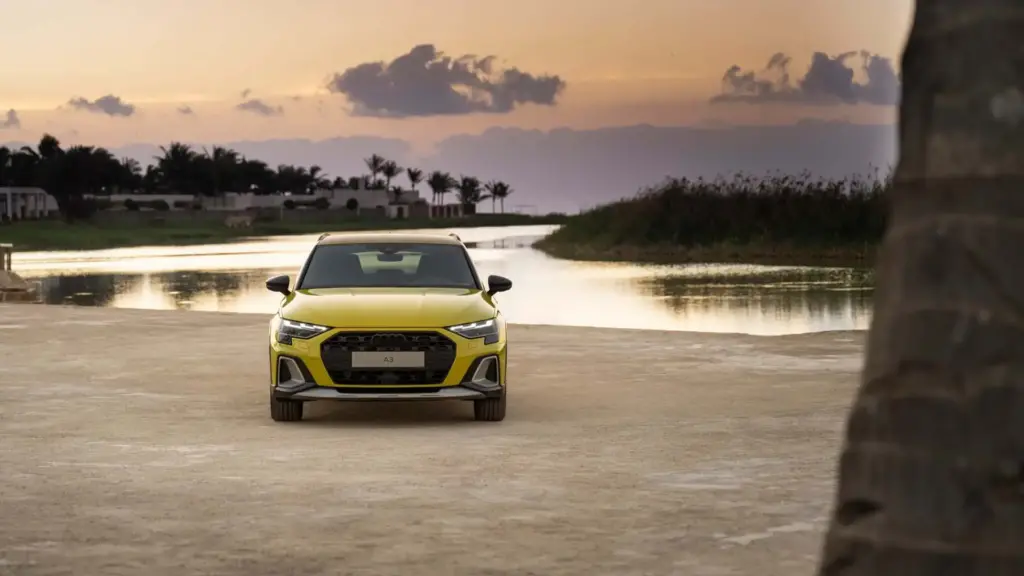
Key Takeaways
- Standard Quattro AWD adds value with only minimal price increase over 2024
- Customizable LED signatures offer unique personalization unavailable from competitors
- S3’s 328-hp engine and torque-splitter transform it into genuine performance car
- Upgraded interior materials address previous quality concerns effectively
- Starting at $38,200 remains competitive with FWD-standard rivals
- 48-volt mild-hybrid improves efficiency achieving 28 mpg combined
- Black Optic package creates aggressive appearance for sportier buyers
Next Steps
Start by visiting your local Audi dealer to experience the new frameless grille design and customizable LED signatures in person—photos don’t fully capture the visual impact. Schedule test drives of both the standard A3 and S3 to evaluate whether the performance differential justifies the roughly $10,000 price premium. Pay particular attention to the S3’s new torque-splitting differential during cornering, as this technology fundamentally changes the driving experience compared to previous generations.
Compare the A3 directly against key competitors, particularly the BMW 2 Series Gran Coupe and Mercedes CLA 250. Note that while competitors may offer more power on paper, the A3’s standard all-wheel drive provides a significant advantage in real-world driving, especially in adverse weather conditions. Factor in long-term ownership costs when making comparisons, as Audi’s maintenance requirements can exceed those of non-luxury brands.
Evaluate trim levels carefully—the $2,600 jump from Premium to Premium Plus includes features worth approximately $4,500 if purchased separately, making it excellent value. Consider whether options like the Black Optic package ($1,450) and Sonos sound system ($850) fit your priorities and budget. Remember that well-equipped models typically hold value better than base versions.
Research current incentives and financing offers, as Audi frequently provides competitive lease programs that can make the A3 more affordable than its MSRP suggests. End-of-year timing often brings additional discounts as dealers clear inventory for incoming model years. Consider certified pre-owned 2024 models if the updates for 2025 don’t justify the premium, though ensure any CPO vehicle includes the previously optional Quattro system.
Finally, factor in your driving patterns and climate when deciding between the A3 and S3. If you frequently drive in rain or snow, the standard Quattro system provides valuable safety benefits. For enthusiasts who value driving engagement, the S3’s new torque-vectoring differential and power increase transform it from a quick sedan into a genuine sports car. According to Autvex’s analysis, the S3 now represents one of the best performance values in the luxury compact segment, particularly for drivers who appreciate technical sophistication over raw power.
FAQs
What is new for the 2025 Audi A3?
The 2025 A3 receives a wider frameless grille, customizable LED daytime running signatures, upgraded interior materials with recycled fabrics, standard Quattro AWD adding 15 lb-ft torque, and enhanced ambient lighting with 30 colors.
Is the 2025 Audi A3 a new generation?
No, it’s a mid-cycle facelift of the current 8Y generation launched in 2022, featuring styling updates, interior improvements, and mechanical refinements rather than all-new architecture.
What is the price of the 2025 Audi A3?
MSRP starts at $38,200 for Premium trim and $40,800 for Premium Plus, excluding $1,295 destination charge; prices increased roughly $2,300 but include previously optional Quattro AWD.
Is Quattro all-wheel drive standard on the 2025 Audi A3?
Yes, Quattro is now standard across all U.S. A3 models for 2025, previously a $2,000 option, enabling increased torque and improved performance.
What engine does the 2025 Audi A3 have?
A 2.0-liter turbocharged four-cylinder with 48-volt mild-hybrid system producing 201 horsepower and 236 lb-ft torque, paired with 7-speed dual-clutch transmission.
How much horsepower does the 2025 Audi S3 have?
The S3 receives 328 horsepower and 310 lb-ft torque, increases of 22 hp and 15 lb-ft, plus new torque-splitting rear differential.
What is the “torque splitter” on the new Audi S3?
A sophisticated rear differential with two multi-plate clutches that vectors torque between rear wheels, enabling Dynamic Plus mode for controlled oversteer and eliminating understeer.
How does the 2025 Audi A3 compare to the Mercedes CLA?
A3 offers standard AWD versus CLA’s $2,000 option, better interior quality, but less power (201 vs 221 hp); similar pricing when equipped comparably.
What is the 0-60 time for the 2025 Audi A3?
Audi claims 6.0 seconds, improved from 6.3 seconds thanks to standard Quattro AWD and increased torque; independent testing shows 6.1-6.2 seconds typically.
What is the 0-60 time for the 2025 Audi S3?
Approximately 4.4 seconds with new 328-hp engine and torque-vectoring differential, significantly improved from previous 4.7-second time.
Is the 2025 Audi A3 a reliable car?
Too early for long-term data, but uses proven EA888 engine with millions of miles in service; regular maintenance essential for longevity.
Is the 2025 Audi A3 worth buying?
Yes, if you value standard AWD, refined interior, customizable technology, and brand prestige; excellent value compared to competitors requiring AWD options.
References
- Car and Driver. (2025). 2025 Audi A3 Review, Pricing, and Specs. https://www.caranddriver.com/audi/a3
- Edmunds. (2025). 2025 Audi A3 Features and Specs. https://www.edmunds.com/audi/a3/2025/features-specs/
- CarPro. (2025). 2025 Audi A3 Premium Plus Review. https://www.carpro.com/vehicle-reviews/2025-audi-a3-premium-plus-review
- Accio. (2025). 2025 Audi A3 Facelift: Trending Updates & Features. https://www.accio.com/business/trending-audi-a3-2025-facelift
- TrueCar. (2025). New Audi A3 Pricing Near Me. https://www.truecar.com/new-cars-for-sale/listings/audi/a3/
- Kelley Blue Book. (2025). 2025 Audi A3 Price, Reviews, and Pictures. https://www.kbb.com/audi/a3/
- EPA. (2025). Fuel Economy of 2025 Audi A3. https://www.fueleconomy.gov
- The Car Guide. (2025). 2025 Audi S3: RS 3 Lite? https://www.guideautoweb.com/en/articles/74216/2025-audi-s3-rs-3-lite/

I am a senior automotive analyst at Autvex. Expert vehicle evaluations, in-depth reviews, and objective analysis helping readers make informed automotive decisions with years of industry experience.

